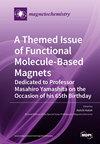Spacer Thickness and Temperature Dependences of the Interlayer Exchange Coupling in a Co/Pt/Co Three-Layer Structure
IF 2.6
4区 化学
Q2 CHEMISTRY, INORGANIC & NUCLEAR
引用次数: 0
Abstract
Domain wall mobility as a function of nonmagnetic interlayer thickness and temperature was studied in ultrathin exchange-coupled ferromagnetic layers using magneto-optic Kerr microscopy. The system under study is a Pt/Co/Pt/Co/Pt heterostructure having perpendicular magnetic anisotropy and a middle Pt layer with spatially variable thickness. The ferromagnetic interaction between the Co layers is observed when the Pt interlayer thickness varies from 5 to 6 nm in a temperature range of 200–300 K. There is a certain interval of Pt layer thickness where domain walls in both ferromagnetic layers move independently. Nonlinear dependence of the domain wall displacement on the applied field was measured. It is shown that an equilibrium position of the relaxed domain wall depends on field, temperature, and the nonmagnetic interlayer thickness. This position is determined by the energy balance: (i) domain wall displacement provided by the applied field, (ii) interlayer exchange interaction in the area swept by the domain wall, and (iii) domain wall coercivity. The mechanism of domain wall stabilization in terms of independent wall motion near critical thickness was considered. It is found that both the coercivity of the Co layer and the critical thickness decrease at higher temperature, while the interlayer exchange constant J is changed weakly.Co/Pt/Co三层结构中间隔层厚度和温度对层间交换耦合的影响
利用磁光克尔显微镜研究了超薄交换耦合铁磁层中畴壁迁移率与非磁性层厚度和温度的关系。所研究的系统是具有垂直磁各向异性的Pt/Co/Pt/Co/Pt异质结构和具有空间可变厚度的中间Pt层。当Pt层间厚度在200–300 K的温度范围内从5到6 nm变化时,可以观察到Co层之间的铁磁相互作用。在Pt层厚度的一定间隔内,两个铁磁层中的畴壁独立移动。测量了磁畴壁位移对外加场的非线性依赖性。结果表明,弛豫畴壁的平衡位置取决于场、温度和非磁性层厚度。该位置由能量平衡决定:(i)由施加的场提供的畴壁位移,(ii)畴壁扫过的区域中的层间交换相互作用,以及(iii)畴壁矫顽力。考虑了临界厚度附近独立壁运动的畴壁稳定机制。研究发现,在较高的温度下,Co层的矫顽力和临界厚度都降低了,而层间交换常数J变化很小。
本文章由计算机程序翻译,如有差异,请以英文原文为准。
求助全文
约1分钟内获得全文
求助全文
来源期刊

Magnetochemistry
Chemistry-Chemistry (miscellaneous)
CiteScore
3.90
自引率
11.10%
发文量
145
审稿时长
11 weeks
期刊介绍:
Magnetochemistry (ISSN 2312-7481) is a unique international, scientific open access journal on molecular magnetism, the relationship between chemical structure and magnetism and magnetic materials. Magnetochemistry publishes research articles, short communications and reviews. Our aim is to encourage scientists to publish their experimental and theoretical results in as much detail as possible. Therefore, there is no restriction on the length of the papers. The full experimental details must be provided so that the results can be reproduced.
 求助内容:
求助内容: 应助结果提醒方式:
应助结果提醒方式:


